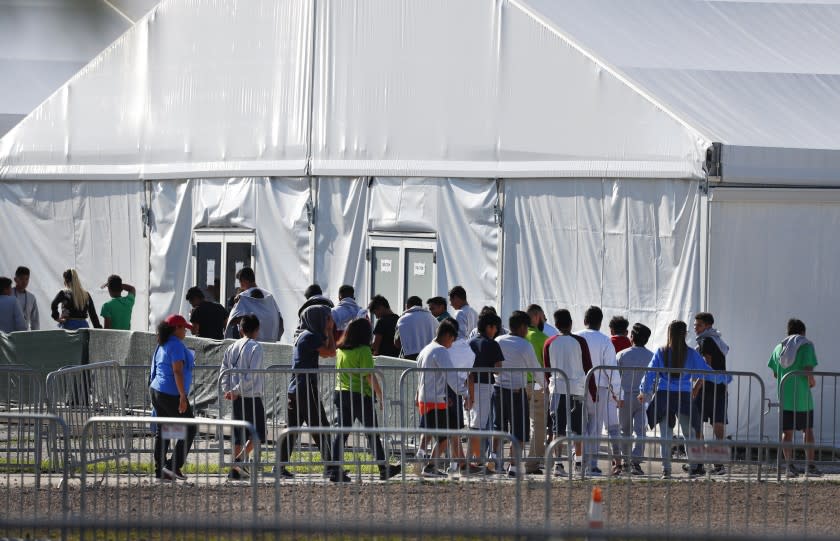Editorial: We need a humane solution for migrant children arriving at the border — and we need one now

The Biden administration’s decision this week to reopen a detention center in Texas for unaccompanied teenage minors drew outrage from immigrant rights advocates, including U.S. Rep. Alexandria Ocasio-Cortez (D-N.Y.), who denounced the move as Trumpism revisited, or at the least extended. It's not that simple.
To be sure, resurrecting the 66-acre, 700-capacity site in Carrizo Springs is jarring, given that President Biden pledged to roll back former President Trump’s draconian rules and policies governing immigration. The move, and a reported decision to reopen another facility at Homestead, Fla., must be temporary.
There are few valid reasons to incarcerate unaccompanied minors who arrive at the border seeking help. Under federal law, the government is supposed to assess them while holding them in the least restrictive environment possible, and speedily hand them over to guardians — parents, relatives, foster care — while their immigration and asylum cases work their way through the system.
Under the 1997 Flores settlement, the government is supposed to detain children for no longer than 20 days, but the reality has been much different, with detentions more than doubling that on average and lasting months in some cases as immigration officials try to vet the youngsters’ stories and their guardians. Although often time-consuming, it's necessary to avoid releasing children into dangerous environments. No one wants a repeat of the 2014 episode in which overwhelmed immigration officials mistakenly released a number of Guatemalan minors to traffickers who enslaved them at Ohio egg farms.
Conditions for children have been atrocious in some of the detention facilities run by Customs and Border Protection and private contractors, including complaints about unsanitary and unsafe conditions and reports of sexual abuse. Yet even at the best-run shelters, children suffer an additional psychological and emotional ordeal after fleeing their homes, often traveling alone northward to the border.
The government must do better. It’s understandable that trying to process newly arrived children — whose numbers have been increasing in recent months — while adhering to COVID-19 restrictions requires more space. But the underlying problem here isn’t space so much as staff and capacity to vet stories and find placements for these children as quickly and safely as possible.
Some of the minors ultimately may not win permission to stay, but some will, either under immigration codes that allow abandoned or orphaned minors a safer harbor, or international agreements and laws — not to mention basic human decency — that bar returning people to unsafe environments. But that’s not the issue of the moment.
The issue is ensuring that the government treats these children as required by law, with detention of minimal duration and in the least-restrictive conditions possible. The ultimate goal is to be able to place these youths safely with guardians so quickly, there'll be no need for sites like the ones the new administration is reopening.
This story originally appeared in Los Angeles Times.

